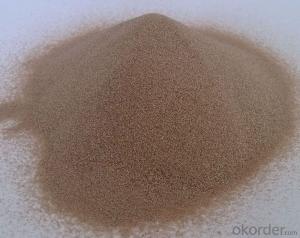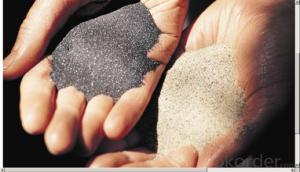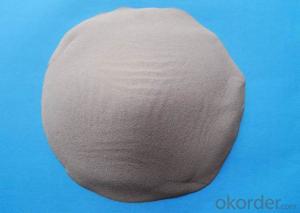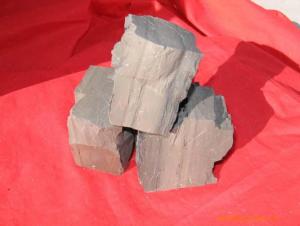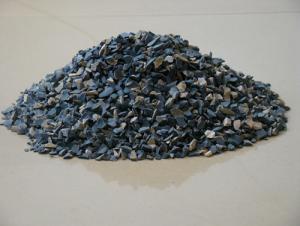High Purity Refractory Material/ Zircon Sands and Zircon Flour
- Loading Port:
- Tianjin
- Payment Terms:
- TT OR LC
- Min Order Qty:
- 25 m.t.
- Supply Capability:
- 3000 m.t./month
OKorder Service Pledge
OKorder Financial Service
You Might Also Like
High Purity Refractory Material/ Zircon Sands and Zircon Flour
1.Structure of Zircon Sand and Zircon Powder
We are offer zircon sand With Below Mention Descriptions: ZrO2 65 - 67 %. We are offer zircon sand With Below Mention Descriptions: ZrO2 65 - 67 %. Zircon is a remarkable mineral, if only for its almost ubiquitous presence in the crust of Earth. It occurs in igneous rocks as primary crystallization products, in metamorphic rocks and in sedimentary rocks as detrital grains.
Further, the mineral due to hardness, durability and chemical inertness, zircon persists in sedimentary deposits and is a common constituent of most sands.
2.Main Features of Zircon Sand and Zircon Powder
Specific gravity: 4.7
Bulk density: 170-180 lb/ft3; 2700 kg/m3;
Hardness: 7.5 Moh
Angle of repose: 30 degree;
Melting point: 4000°F, 2200°c
Thermal stability: no change to 3090°F, 1700°c
Loss on ignition: 0.02%-0.12%
3.Main usage of Zircon Sand and Zircon Powder
The zircon sand is mainly used for fireproof materials (commonly called zirconium fireproof materials such as corundum bricks and zirconium fireproof fiber), sand for casting mould in casting industry (precision casting sand) and fine enamelware. In addition, the zircon sand is also used in the production of glass, metal (zirconium sponge) and zirconium compounds (zirconium dioxide, zirconium oxychloride, sodium zirconate, zirconium potassium fluoride, zirconium sulfate, etc.).
4. Zircon Sand and Zircon Powder Images

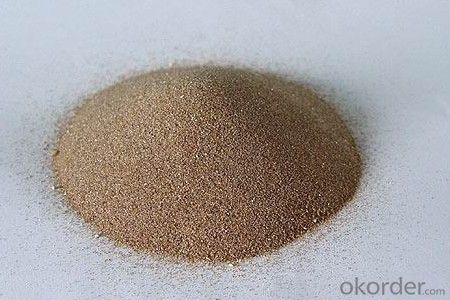
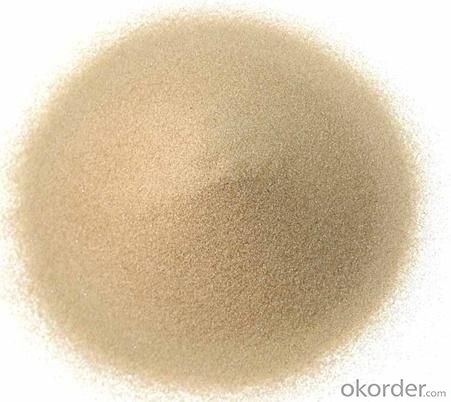
5. Zircon Sand and Zircon Powder Specification
Item | SY8 | SY6 |
Zr Content (ZrO2) | ≥66% | ≥65.5% |
Fe Content (Fe2O3) | ≤0.08% | ≤0.12% |
Ti Content (TiO2) | ≤0.10% | ≤0.10% |
6.FAQ of Zircon Sand and Zircon Powder
1). Q: Are you a factory or trading company?
A: We are a factory.
2). Q: Where is your factory located? How can I visit there?
A: Our factory is located in China. You are warmly welcomed to visit us!
3). Q: How can I get some samples?
A: Please contact me for samples
- Q:What is refractory brick?
- Capability1. Refractory brick is also known as firebrick. It is faint?yellow or brownish. Refractory brick with 770 ℃ at high temperatures is called for short firebrick. It is mainly used for building and smelting furnace. It is a refractory material made by fring refractory clay or other refractory material.
- Q:Can the teflon material resist fire?
- Teflon does not burn and with the ability of flame retardant.
- Q:What are fireproofing materials?
- 1. With the tape made by double-coated flame-retardant and chemical defense surface adhesive and that only occurs charring with no melting drops and maintains good strength when meeting with fire as main material, and by the laminating-sewing-pasting process, clothing body and gloves are made and equipped with flame retardant, chemical defence, voltage resistant, and puncture resistant boots, the clothing assembly is constituted. 2. They are usually asbestos. Some of them have better quality and are made by wiredrawing of aluminum zirconium and silicon mixtures, and of course others are directly manufactured with some natural objects. 3. All the panels that meet the first-order fire protection requirements can be fireproofing materials. Like gypsum boards, aluminum sheets and so on. Coatings are usually those with fine powder, high density and good sealing. 4. Phenolic foam board can meet the requirement and its test temperature can reach up to 2000℃ under which it has no molten droplet but good integrality. Thermal Conductivity: 0.03W/(mk). It is non-flammable, non-toxic and smokeless! 5. The hollow ceramic micro-bead is good in thermal insulation and fire-retardance.
- Q:Is fireclay poisonous?
- Refractory materials are typically oxides, alumina, magnesium oxide and aluminate cement and etc, which are non-toxic.
- Q:how to use boiler fireclay
- Boiler refractory, diluted with water to touch the places where needed, can be used after high temperature baking.
- Q:what kind of refractories is used to make the industrial silicon furnace mouth long life?
- Fused zirconia corundum brick, the smelter of the glassworks is used this kind of lining, and you can contact by private letter.
- Q:How long is the fire endurance of fire resistant rolling shutter door?
- According to the new national standards GB_12955-2008 for fire doors from January 1, 2009, fire doors are classified acoording to thermal insulation fireproof door(A),part heat insulation fireproof door(B) and non thermal insulation fireproof door(C), rather than thermal insulation fireproof door. At the same time, the original fire endurances of class A, B and C fire doors are adjusted to 1.5h, 1.0h and 0.5h respectively. So, GB is 1.5h
- Q:Does refractory belong to metallurgical auxiliary materials?
- Refractory is widely used in industrial circle, such as metallurgy, chemical industry, petroleum, mechanical manufacturing, silicate and power, and its coonsumption is the maximum in metallurgy, accounting for 50% to 60% in total output. In order to improve slag-corrosion resistance of furnace lining, usually choose carbon-containing refractory. Refractory of various furnace lining are respectively: For the body, it is clay brick; as for the lower part, bosh and middle, it is SiC brick; for furnace bottom, it is carbon brick. Lattice brick is an important refractory product used in air heating furnace and regenerative chamber. Refractory is widely used in metallurgy. In order to improve slag-corrosion resistance of lining. Central line in tuyere and hearth are high-alumina brick. Refractory consumption is the maximum in metallurgy, accounting for 50% to 60% in total output. For the bosh and middle, it is SiC brick. In order to improve its thermal storage capacity: The furnace stack is clay brick. It is defined as refractory where the physical and chemical properties allows its use in high temperature environments; The lower furnace body
- Q:Is there anyone who can explain how to grade the level of fire insulation board?
- The classification of fire proof level for thermal insulating material 1, Burning performance of building material can be classified into the following several grade according to national standard GB8624-97: Non combustible building materials: Non-conbustible material. Class B1: Refractory building materials: Flame retardant materials have good flame retardant effect.
- Q:How to use fireclay?
- Fire-resistant adhesive material is needed, its effect equals to the cement. Cement will certainly do.
1. Manufacturer Overview |
|
|---|---|
| Location | |
| Year Established | |
| Annual Output Value | |
| Main Markets | |
| Company Certifications | |
2. Manufacturer Certificates |
|
|---|---|
| a) Certification Name | |
| Range | |
| Reference | |
| Validity Period | |
3. Manufacturer Capability |
|
|---|---|
| a)Trade Capacity | |
| Nearest Port | |
| Export Percentage | |
| No.of Employees in Trade Department | |
| Language Spoken: | |
| b)Factory Information | |
| Factory Size: | |
| No. of Production Lines | |
| Contract Manufacturing | |
| Product Price Range | |
Send your message to us
High Purity Refractory Material/ Zircon Sands and Zircon Flour
- Loading Port:
- Tianjin
- Payment Terms:
- TT OR LC
- Min Order Qty:
- 25 m.t.
- Supply Capability:
- 3000 m.t./month
OKorder Service Pledge
OKorder Financial Service
Similar products
New products
Hot products
Related keywords
